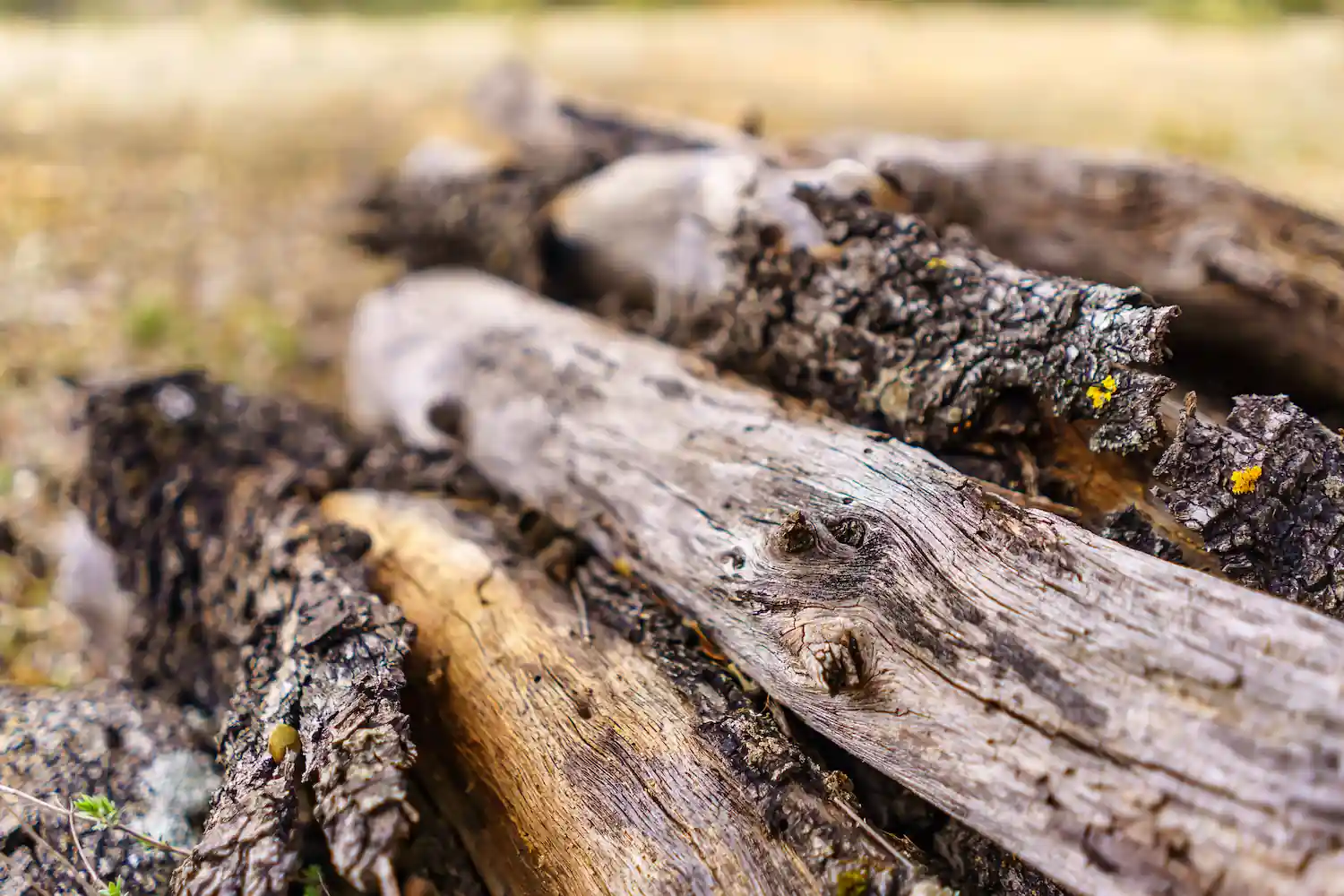When lighting a fireplace, the choice of firewood is one of the most important decisions. Although there are many different types of wood available, it is important to understand which are the most energy efficient.
This is important both to reduce fuel purchase costs and to reduce greenhouse gas emissions. Below we look at 10 different types of firewood and their energy efficiency.
Ten types of fuelwood and their energy efficiency
Fuelwoods are divided into two categories: hardwoods and softwoods. Hardwoods are denser and contain less moisture, which makes them more energy efficient. Softwoods, on the other hand, are less dense and more moist, so they burn faster, but produce less heat.
Hardwoods
Hardwoods are characterised by their density and low moisture content, which makes them extremely energy efficient. They include the following:

Holm oak
Holm oak is a tough hardwood that burns slowly and produces a constant heat over a long period of time. It also has a high density of up to 1,000 kg per cubic metre.
It is ideal for use in iron cookers because it produces little smoke and generates a large amount of heat per unit of fuel. It also has the ability to form large, efficient embers.
Although it is difficult to ignite, oak wood stands out for its great calorific value and because it is consumed with very little flame.
Oak
Oak is a semi-hard wood, which makes it ideal for burning slowly over a long period of time. On average, it has a density of 680 kg per cubic metre.
It produces a lot of heat per unit of fuel, which makes it extremely energy efficient. Like holm oak, it is somewhat difficult to ignite, but offers a very good thermal performance. Due to the large amount of tannins present in oak, it takes 1.5 to 2 years to dry out completely.

Beech
Beech is a dense wood that is very efficient as a fuel for fireplaces and cookers. One of its advantages is that, thanks to its smooth bark, it does not give off sparks when burned. It is one of the most energy-efficient types of firewood.

Olive
Olive is another very hard and dense wood that offers great performance in fireplace heating. Its density is between 850 and 1120 kg per cubic metre.
It is very low in moisture, even when freshly cut, as it comes from a flowering crop that is pruned regularly. Beech wood also gives small branches that burn very well. This type of wood is ideal for thermal inertia cookers.
Ash
Ash is a hardwood with an average density of 550 kg per cubic metre. It is a strong wood that is widely used in carpentry and construction. It has a low moisture content when freshly cut, which is around 34%.
Thanks to its hardness, it generates powerful and lively flames that work excellently as a heating system for heating the home.
Birch
The density of birch is around 500 kg per cubic metre. It is a semi-hardwood with a high moisture content, which means it burns quickly, but produces less heat per unit of fuel than hardwoods.
Birch wood needs to be dried quickly after cutting, otherwise it degrades rapidly, leading to mould and fungus. Nevertheless, it is a wood that offers good energy efficiency.
Eucalyptus
Eucalyptus is a semi-hardwood. Its density is usually between 800 and 900 kg per cubic metre. Eucalyptus firewood is characterised by its resistance to impact.
It should be cut when it is still green, as once dry it becomes even harder and more difficult to split. It has a high calorific value, so it works well as fuel for any type of cooker or fireplace.
Softwoods
Softwoods are characterised by their low hardness and high moisture content, which makes them less energy efficient. The most commonly used as firewood are:

Pine
Pine is a softwood with a density of around 440 kg per cubic metre. This wood is very difficult to burn when freshly cut, but once it is dry it ignites quickly and has a good calorific value.
The flame produced by pine wood is large and generates few embers. Due to its oil content, this type of wood produces a lot of soot, which makes it necessary to sweep the cooker or fireplace often.
Spruce
Spruce is another common softwood. As with pine, it burns quickly and generates a strong, high flame. This type of wood is often used to light a fire quickly or to stoke it at certain times, then switching to hardwood to generate a longer-lasting and more efficient flame.

Cedar
Cedar is another popular softwood. It is not recommended for use as fireplace wood, except to start the cooker or fireplace. It is a wood that ignites very quickly and can cause sparks and embers, so it can be dangerous to use this wood as a heating method.
The calorific value of firewood
The calorific value is the total amount of energy released when 1 kg of combustible material is burned, commonly expressed in kilocalories per kilogram (kcal/kg).
The calorific value varies depending on the wood used. However, most woods have an average calorific value of between 4,000 kcal/kg and 8,000 kcal/kg.
Hardwoods generally have heating values close to 8000 kcal/kg, which means that they are very energy efficient.
That is, they produce much more heat than softwoods using the same amount of material. Softwoods, on the other hand, generally have lower heating values closer to 4,000 kcal/kg and are therefore less efficient, as they require larger quantities to produce the same amount of heat.




